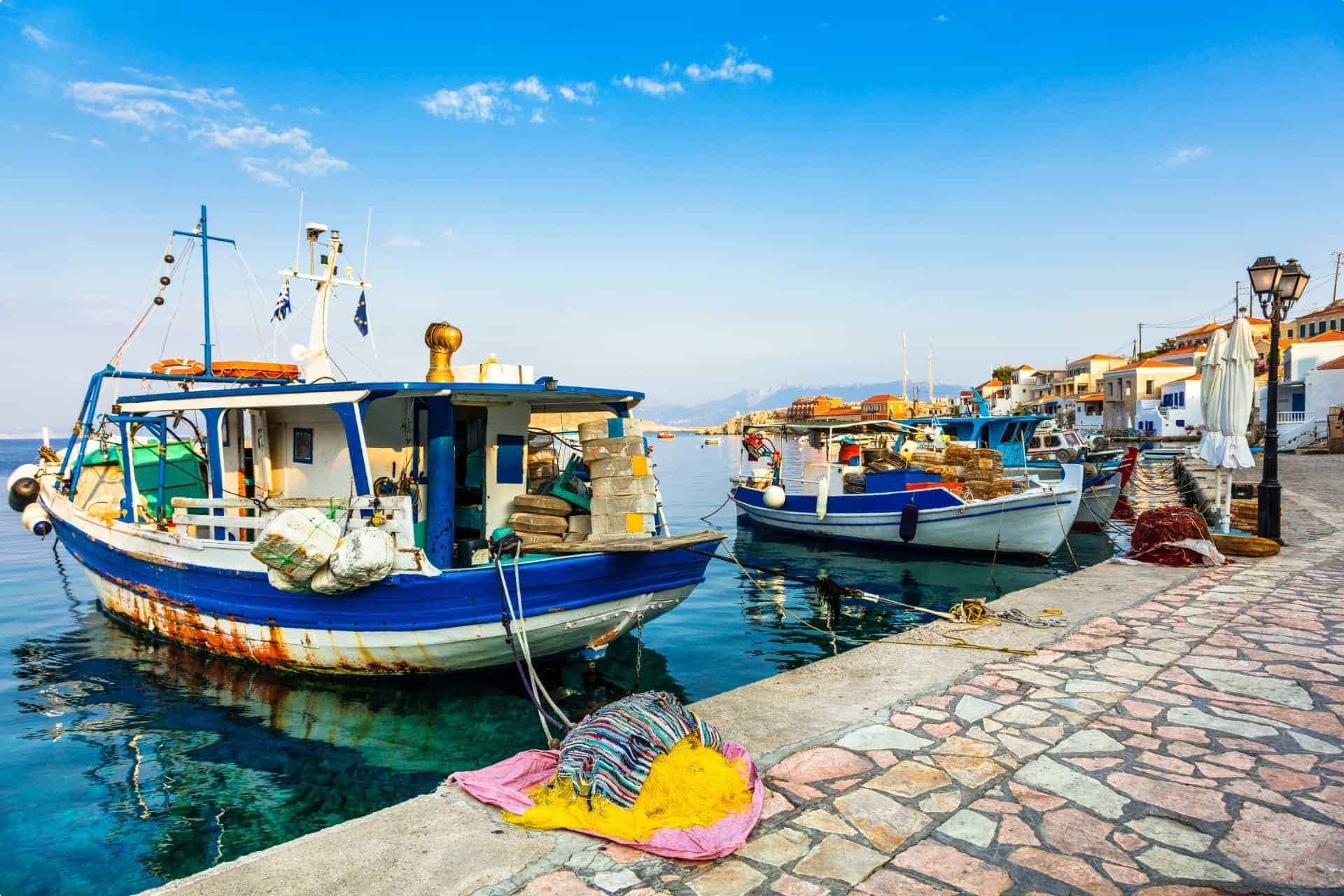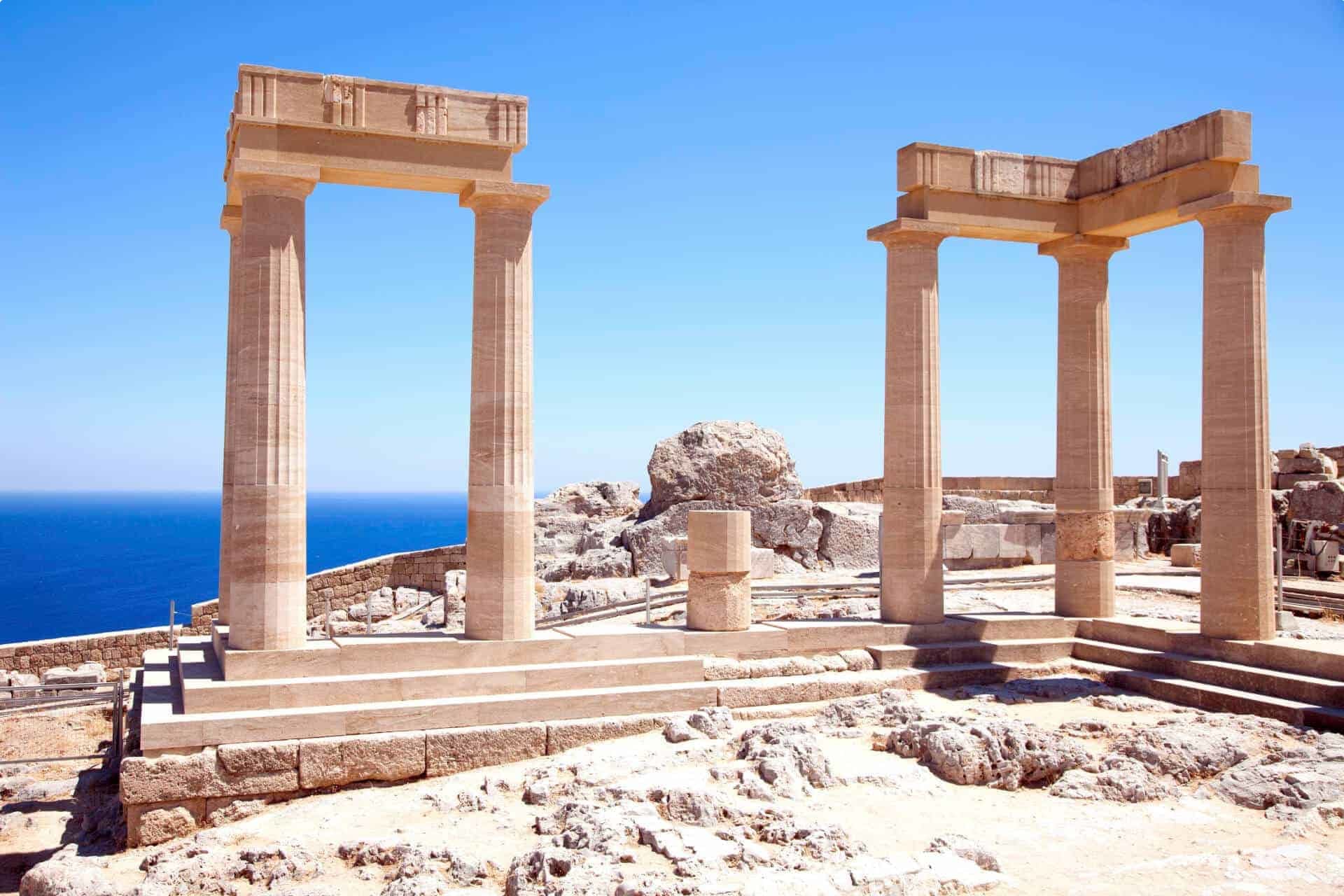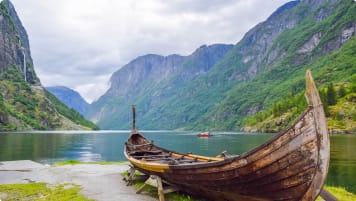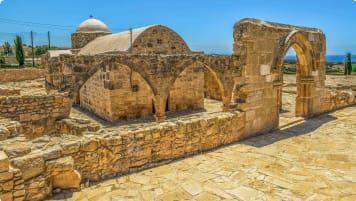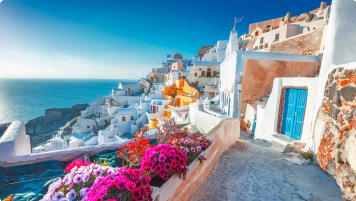Bronze age civilisations of the Eastern Mediterranean Islands
Bronze age civilisations of the Eastern Mediterranean Islands As you explore these islands and learn about the cradle of Western civilisation, ancient cultures and history will come to life. Visit magical Santorini, which contains a…
22 Sep 17 · 18 mins read
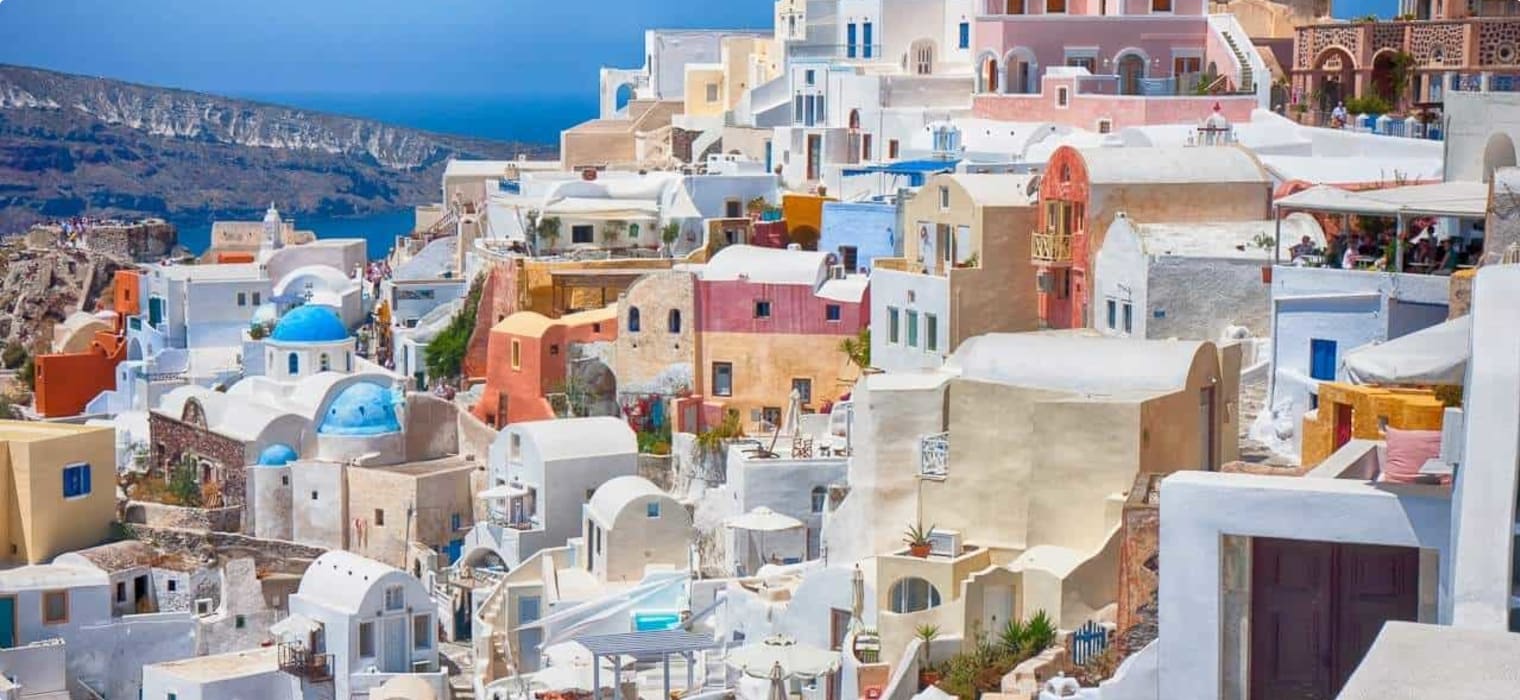
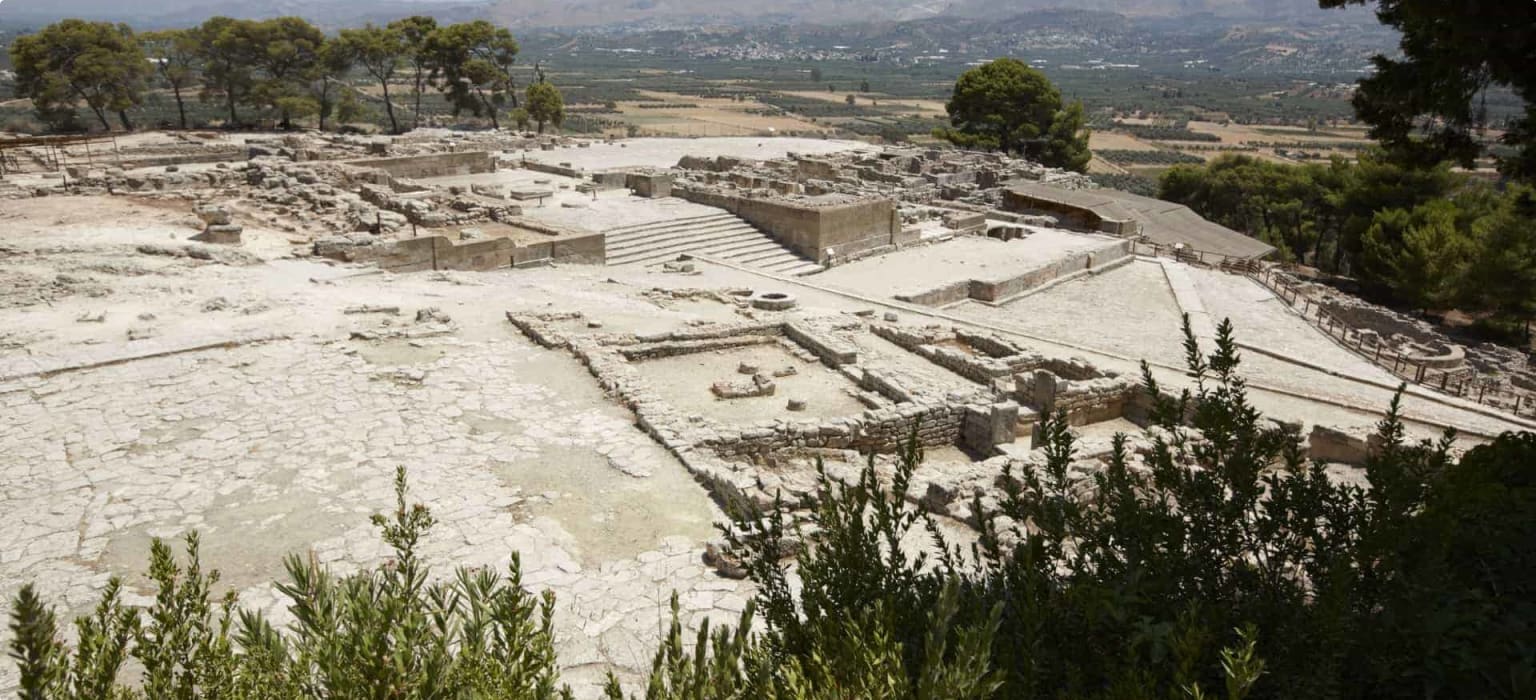
Bronze age civilisations of the Eastern Mediterranean Islands
As you explore these islands and learn about the cradle of Western civilisation, ancient cultures and history will come to life. Visit magical Santorini, which contains a remnant of an ancient civilisation disrupted by volcanic action. Or Crete, where you can explore the home of the Minoan civilisation with important archaeological finds at Knossos and Phaistos. Explore Rhodes, inhabited since the Stone Age, as well as the island of Cyprus, where east meets west.
Odyssey Traveller design their East Mediterranean Islands itinerary for senior travellers. Our small group tours are made for active travellers seeking authentic experiences. Take in the very best of Santorini, Crete, Rhodes, and Cyprus with our knowledgeable guides and local expertise. Book your Eastern Mediterranean Islands tour with the specialists in educational travel. If you’re keen to experience our guided tours of Crete, Cyprus, Santorini and Rhodes, please call or send an email. We’d love to hear from you! For all of Odyssey’s Greece and Eastern Mediterranean Islands travel packages click here.
The “Greek Islands”
Most visitors to Greece want their trip to include, or even be devoted to, the islands, but may initially be bewildered by their number and variety. In order to distinguish these islands and their diverse attractions, here is a general overview by region. Read on for more detail on Santorini, Crete, Rhodes, and Cyprus later.
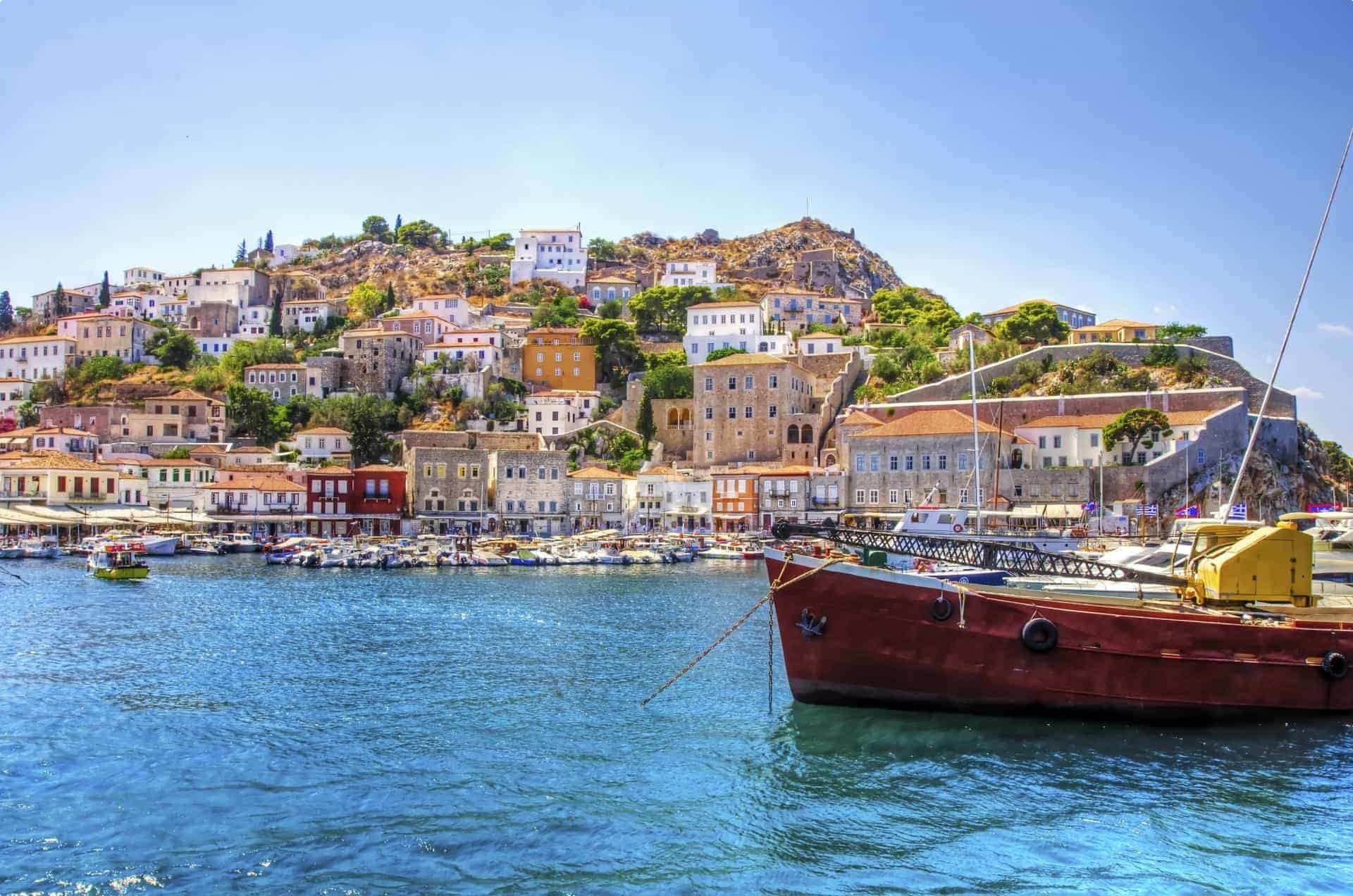
Saronic Gulf Islands
The islands’ accessibility from Piraeus by ferry and especially by the newer fast boats has put them within day-trip distance of Athens, making them popular with both Athenians and travellers. Some of them, especially Hydra, are also popular cruise ship stops. Despite their popularity, these islands have largely retained their Greek character, and their attractiveness and proximity to Athens make them good choices for the visitor with limited time who wants a taste of island life. All the major islands have significant buildings and museums relating to more recent Greek history.
Cyclades
A group of Greek Islands, located in the southern part of the Aegean Sea (south of Athens and north of Crete). The archipelago contains some 2,200 islands, islets and rocks; just 33 islands are inhabited. The Cyclades are best known for the islands of Santorini and Mykonos.
Dodecanese
An island group in the South Aegean Islands of Greece. Their hottest spots include:
- Kalymnos, a beautiful island close to the coast of western Turkey;
- Kos is the third largest of the Dodecanese and the second most popular island for tourism after Rhodes;
- Nisyros is a small island to the south of Kos, home to Greece’s only ‘active’ volcano;
- Patmos is located north of Leros and is one of the most religious Greek Islands because it is where Saint John the Divine had his revelation and wrote the Apocalypse; and
- Tilos, a small and remote island, located between Kos and Rhodes, visited by campers and peace seekers.
Rhodes
Rhodes is one of the largest and most fertile of the Greek Islands, and is one of the most visited because of its combination of beaches, archaeological sites, and its extensive medieval town. The climate is particularly good, with the weather typically sunny and mild. The island is usually counted as one of the Dodecanese, but due to its importance for travellers is considered separately here. The rockrose is so prolific here that it has been named the ‘Island of Roses,’ though modern scholars doubt the ancient theory that the island’s name comes from the Greek word for rose. While the northern coast is renowned for its lively tourist resorts, the south offers tranquil beaches and a slower, more simple pace of life.
Sporades
These islands have a different atmosphere to the travel-poster Greece of the Cyclades. Instead of bare rugged hills topped with dazzling villages, the Sporades are fertile and heavily wooded, with pine-forested mountains sloping down to some of the best beaches in the Aegean. The local architecture is more characteristic of Northern Greece, with less whitewashing and more stone roofs. Skiathos is the best known and easiest to get to; accordingly it is the most crowded, with throngs of visitors arriving all summer. Skopelos, while just as attractive, is less touristed outside of July and August, and Alonnisos is quieter again.
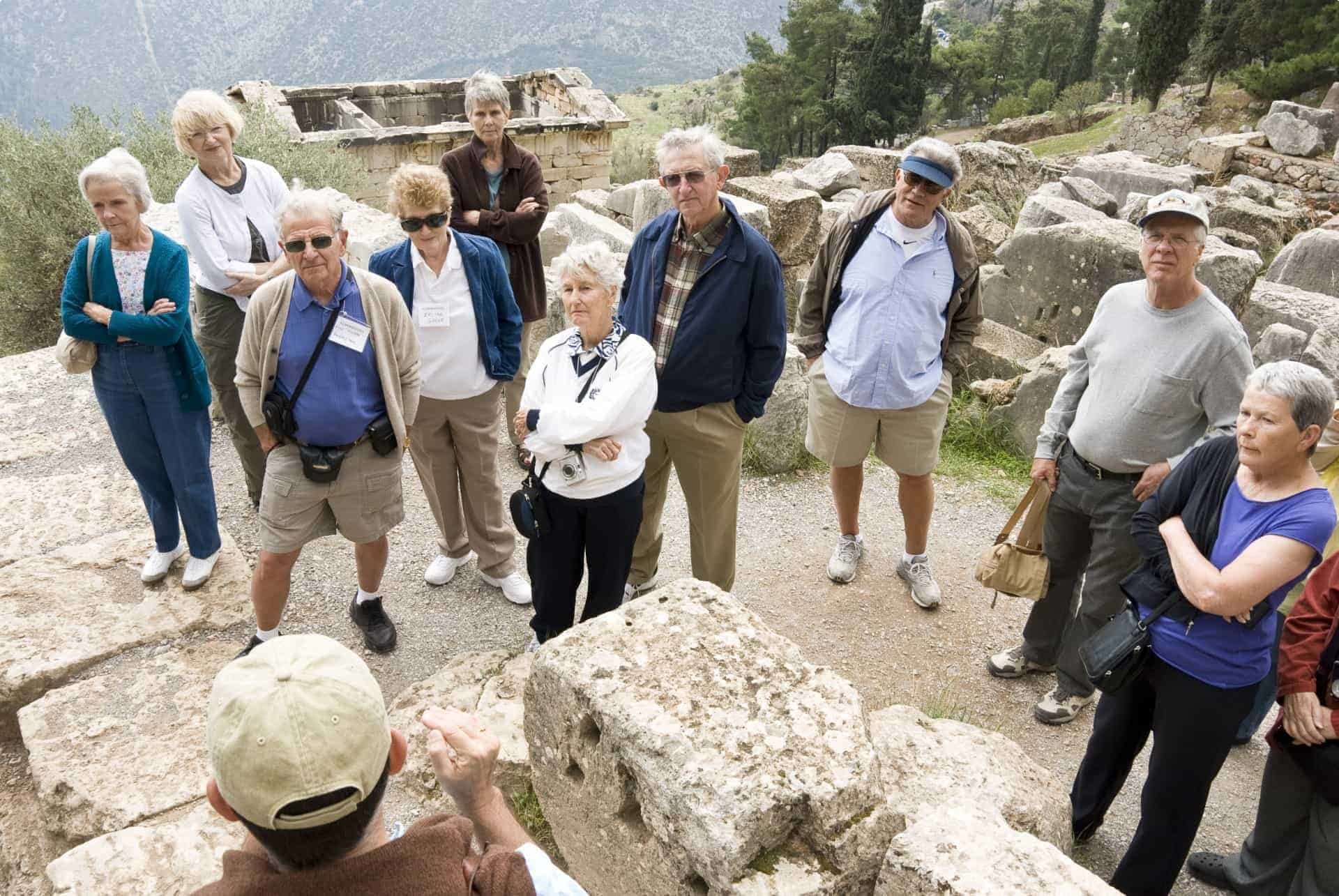
East Aegean Islands
This region covers the easternmost Greek Islands of the Aegean Sea. The Eastern Aegean islands group is, like the Dodecanese, much closer to Turkey than to the Greek mainland. In fact, the majority of the islands form the border between Greece and Turkey. Tourism here is less developed than the rest of the Greek islands, but travellers here will be richly rewarded. These islands boast traditional architecture and way-of-life, with a strong family atmosphere. Gorgeous beaches can be found at Samos, Thassos and Ikaria. Visit Chios for its medieval villages; Lesvos and Lemnos for the seaside and sandy coasts. Mysterious Fourni was once a shelter from the pirates of Corsica.
North Aegean Islands
Major islands include Thasos, Samothrace, Limnos, Agios Efstratios and Skyros. Thasos gathers crowds of holiday-makers, especially from nearby North Greece, from where it is an ideal place for a quick weekend getaway. Choose between a lively experience or a quiet and relaxing holiday, since the island can satisfy both styles of travel. Thasos is a pretty island that has many quaint little villages and sandy beaches with crystal clear waters. The road system of the island is very well planned and circles the island coast-wise.
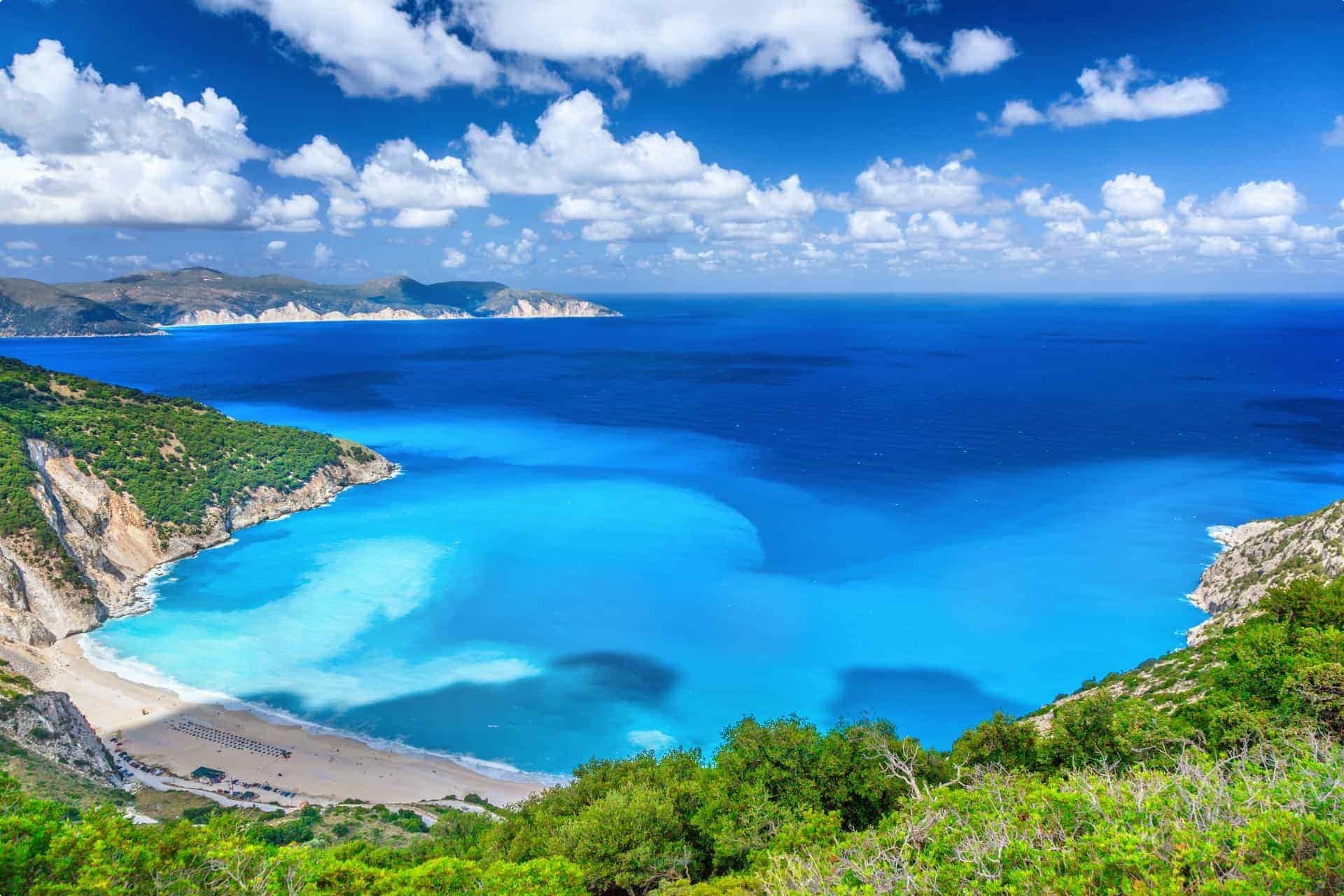
Western Greek Islands (or Ionian Islands)
This region refers to the chain of Greek Islands stretching along the west coast of Greece in the Ionian Sea. For historical reasons, the isolated islands of Kithera and Antikythera, south of the Peloponnese, are included in this group. These islands are traditionally called the Heptanese, i.e. “the Seven Islands” in Greek, but the group includes many smaller islands as well as the seven principal ones. The islands are well known for their beautiful sandy beaches, crystal clear waters, architecture, charming villages and stunning scenic countryside which is verdant and flourishing with greenery and nature. Each Ionian island has a distinct character. Known islands include
- Lefkada (Santa Maura), the island that is associated with the myth of Sappho;
- Ithaki (Val di Compare), known as the home of Odysseus;
- Kefallonia (Cefalonia), the biggest island of the group, especially famed for Myrtos Beach; and
- Zakinthos (Zante), famous for the endangered species of the sea turtle Caretta-Caretta, and the Navagio Beach.
Crete
Stunning Crete is divided into four prefectures. From west to east, they are the Chania Prefecture, Rethymno Prefecture, Heraklion Prefecture, and Lasithi Prefecture. Its key cities include
- Heraklion (Iraklion or Candia), the largest city with the archaeological highlight Knossos;
- Agios Nikolaos, the cute capital of Lasithi;
- Chania (Haniá), the largest city of the western region;
- Chersonissos (Hersonissos), a blissful harbour town in winter, and party capital of Crete in summer;
- Elounda, a small fishing town on the Elounda Bay with the abandoned Spinalonga Island;
- Hora Sfakion, a tiny capital in the southwest with white houses and the ferry to and from the Samaria Gorge;
- Ierapetra, the southernmost city of Europe with some nice beaches;
- Malia, a crowded tourist mecca popular mostly with young (especially British) travellers; and
- charming Rethymno, with its Venetian-Ottoman influences
Splendid Santorini
Santorini is a volcanic island that was colonized by the Minoans in 3000 BC. Originally named Thira by the Dorians in the 8th century BC, it was renamed Santorini in honour of St. Irene by the Venetians who conquered the island in the 13th century. It is believed to be a candidate for the lost kingdom of Atlantis. Uniquely crescent shaped and set in the crystal blue waters of the Aegean, Santorini is a dream destination for honeymooners and holiday-makers worldwide. It owes its rugged coastline to a devastating volcanic eruption in the 16th century. Today, it remains a stunning example of white washed villages, clinging to the volcanic cliffs above black sand beaches.
Santorini is well suited to walking. A small group walking tour is the best way to experience its culture and catch glimpses of everyday life. Odyssey Traveller’s all inclusive packages to Santorini include a walking tour of Ancient Thera. This antique city is situated on a ridge of the steep, 360 m high Messavouno mountain. It was first settled by the Dorians in the 9th century BC, and consists of Hellenistic, Roman and Byzantine ruins. There remain traces of a theatre, temples, houses complete with mosaics, a market (or agora) and a gymnasium. With stunning views to boot, it is an atmospheric and rewarding archaeological site to visit on foot.
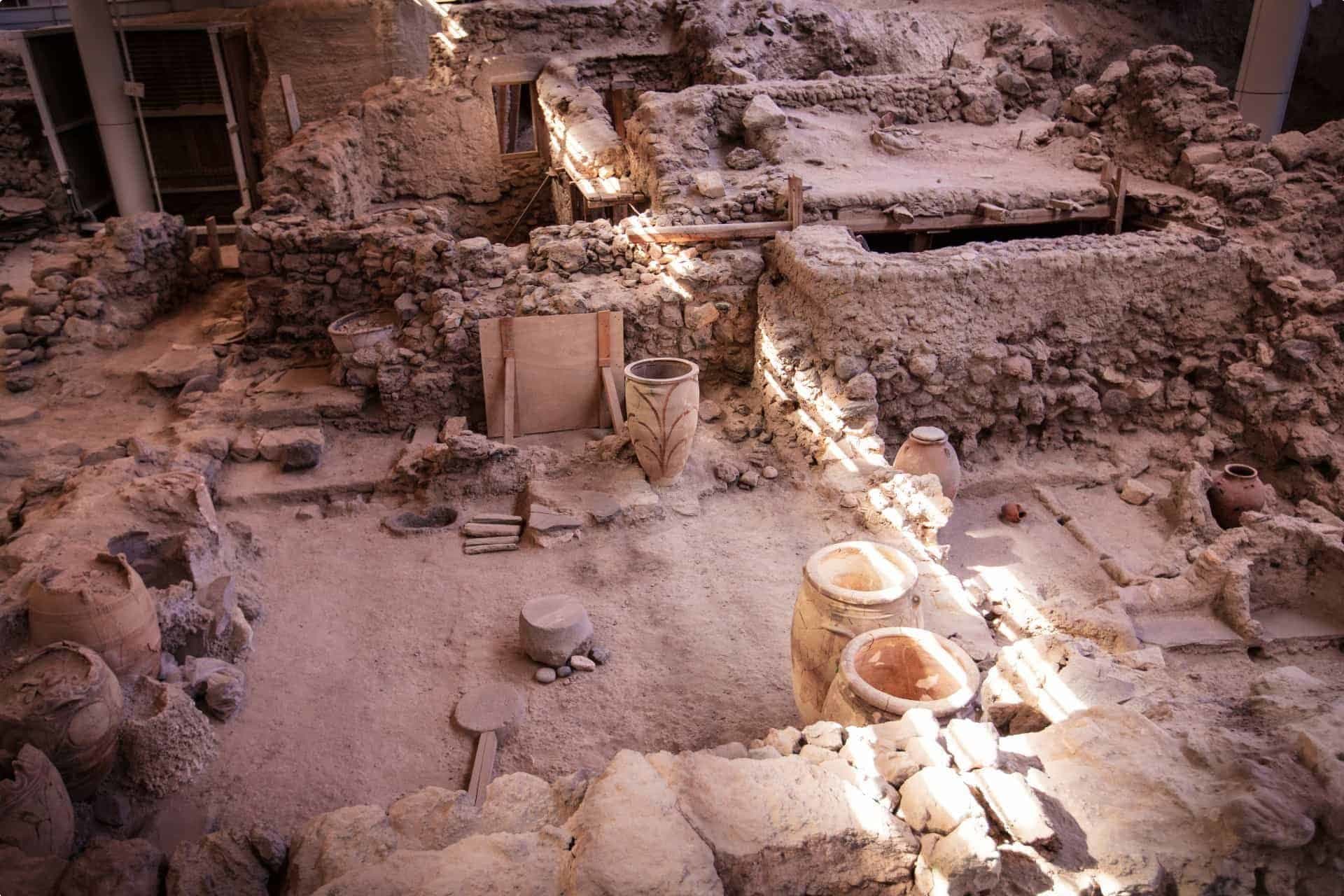
Must-see in Santorini
While travelling in Santorini, you cannot miss the following highlights:
1. The wall paintings of Thera.
Exploration of Akrotiri began in 1967. The wall paintings discovered at the site are the largest and best preserved examples of art from any ancient historical period within this region. They are invaluable to scholars, providing a wealth of information on the environment, art, religion, economy and everyday life of people at this time. Reproductions of the wall paintings can be viewed at the Archaeological Museum in Fira, Santorini’s capital.
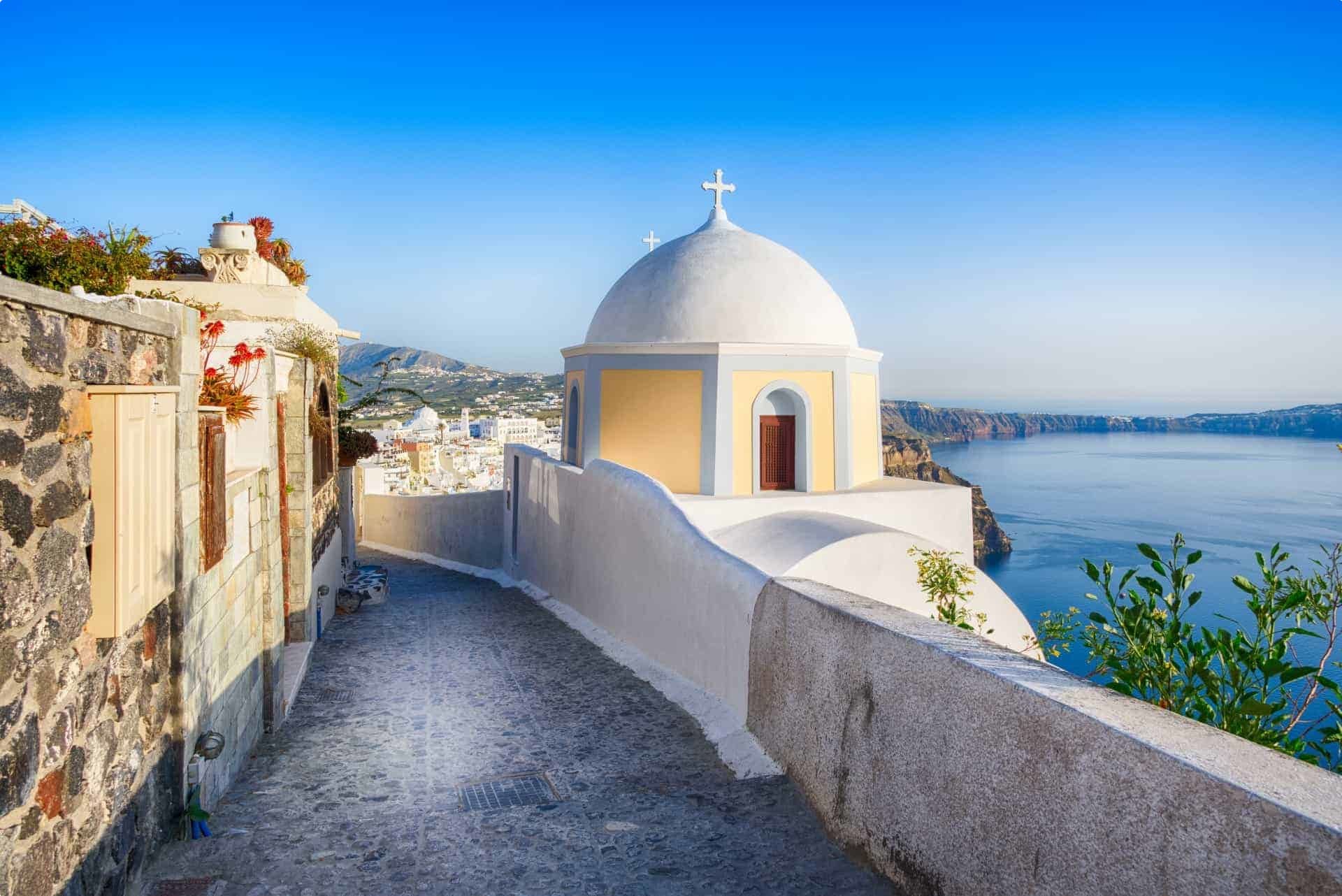
2. The Chapel of Agios Stylianos.
A quaint, cobbled path leads to this pastel-hued chapel, which clings to the edge of a cliff. From there, wander to the nearby Frankish Quarter, which features a maze of arcaded streets.
3. The Negaro Ghisi Museum
The 1956 earthquake devastated Santorini, damaging over 1000 buildings and altering its landscape significantly. See maps, paintings and photographs of the capital, Fira, before and after the earthquake at the Negaro Ghisi Museum.
4. Nea Kameni
Nea Kameni is the youngest volcanic landform in the Mediterranean. An uninhabited island in the flooded caldera, a twenty minute walk will reveal openings bursting with steam, and yellow, sulphuric waters. It is described as lunar-like in its topography, and is well worth a visit. Enjoy the therapeutic waters of the hot springs while you’re there.
5. Santorini’s vineyards
Santorini is famed for its wine production. Due to high winds, grape vines are weaved into basket-like shapes kept low to the ground, rather than tied to trellises. Be sure to stop in at a vineyard on your travels, so you can discover for yourself the reason for this popularity.
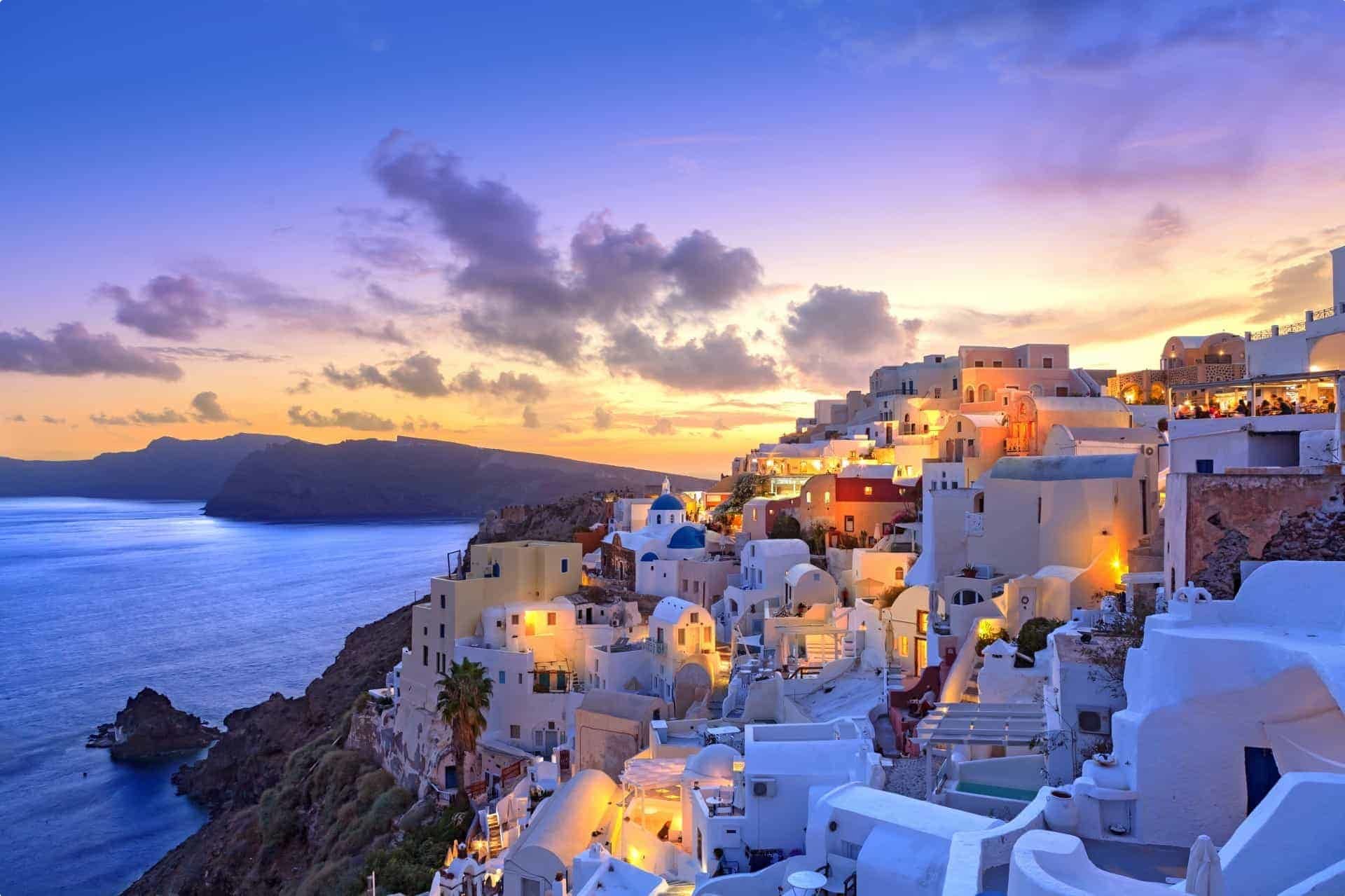
6. Oia
Stunning Oia is perched at the northern tip of Santorini. Residents rallied to repair it after the 1956 earthquake, and as a result, you will be hard pressed to find a more beautiful example of a Cyclades village. Its views across the watery caldera will stay with you forever.
7. Akrotiri
Akrotiri is a Minoan, Bronze Age settlement. Destroyed by a volcanic eruption circa 1613 BC, it is now a significant archaeological site that is compared to Pompeii. Volcanic ash preserved numerous frescoes, which can be viewed on the interior walls of its houses. Unlike Pompeii, no human remains were discovered at this site. This suggests that fortunately, people had a chance to escape. It is an incredible snapshot of a long-passed age.
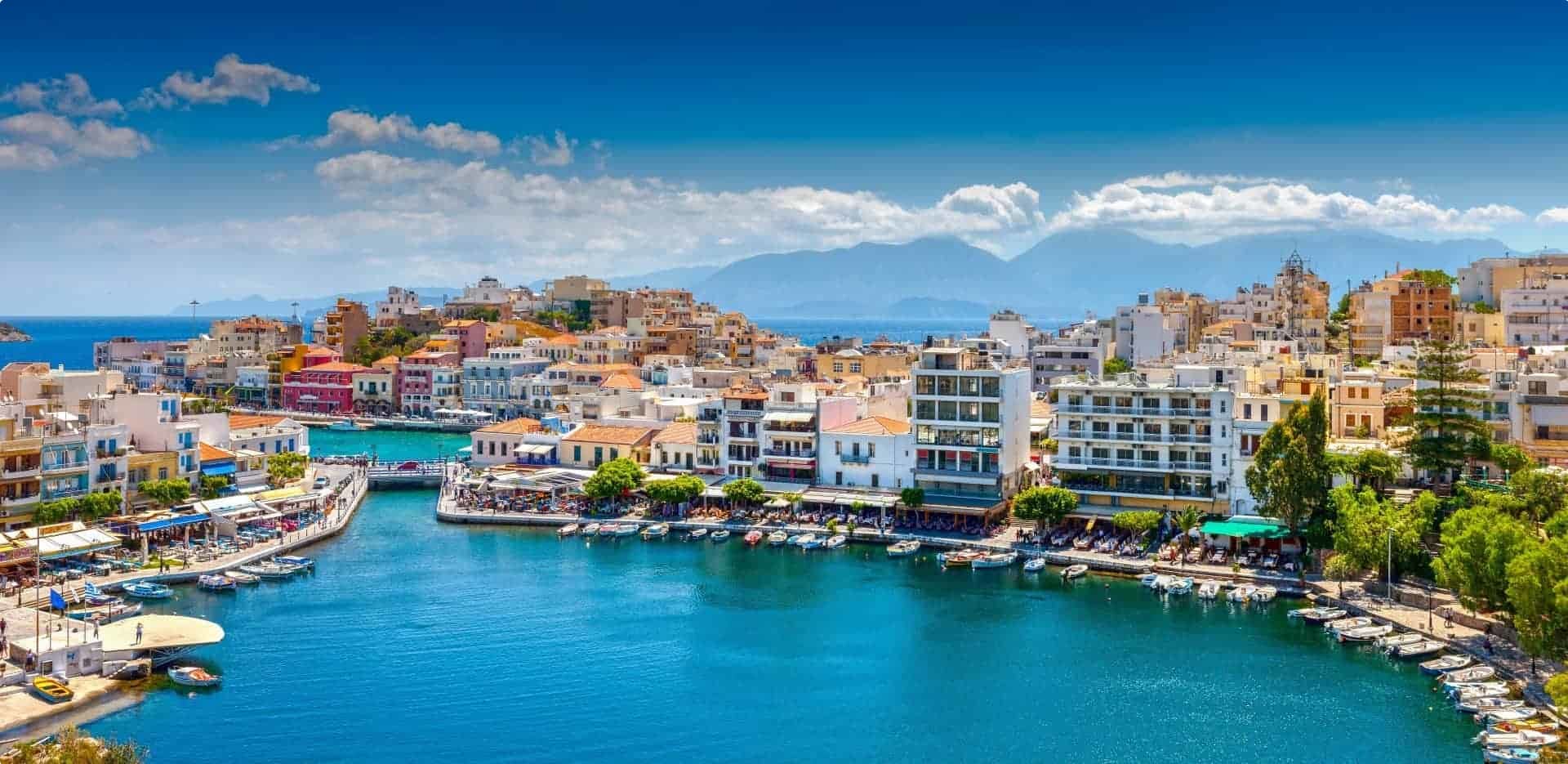
The culture of Crete
Crete is one of the most beautiful and traditional regions of Greece. Although Cretans have fought generations of invaders, they are a people renowned for their courtesy and hospitality to travellers. This cements its status as a highlight of any trip to the Eastern Mediterranean Islands. It is the largest and most populous of Greece’s islands, and is notable for its varied terrain. It boasts white, and even pink sandy beaches, dreamy villages and rugged mountains. The tallest of them, Mount Ida, houses a cave thought to be the birthplace of Zeus. Despite being a vital part of broader Greece, Crete has retained its own local culture. This include its poetry and traditional music, which is often accompanied by indigenous dance. Owing to its unique and surprising treasures, some say Crete could be its own country. Why not discover it for yourself?
Top 10 in Crete
1. The Heraklion Archaeological Museum
This is one of the largest and most important museums in Greece. It was built on a site previously occupied by the Roman Catholic monastery of Saint Francis. This was destroyed by an earthquake in 1856. The museum’s building is an important example of modernist architecture and was awarded a Bauhaus commendation. The museum houses representative artefacts from the Neolithic period to the Roman times. The museum’s Minoan collection contains unique examples of Minoan art, many of them true masterpieces.
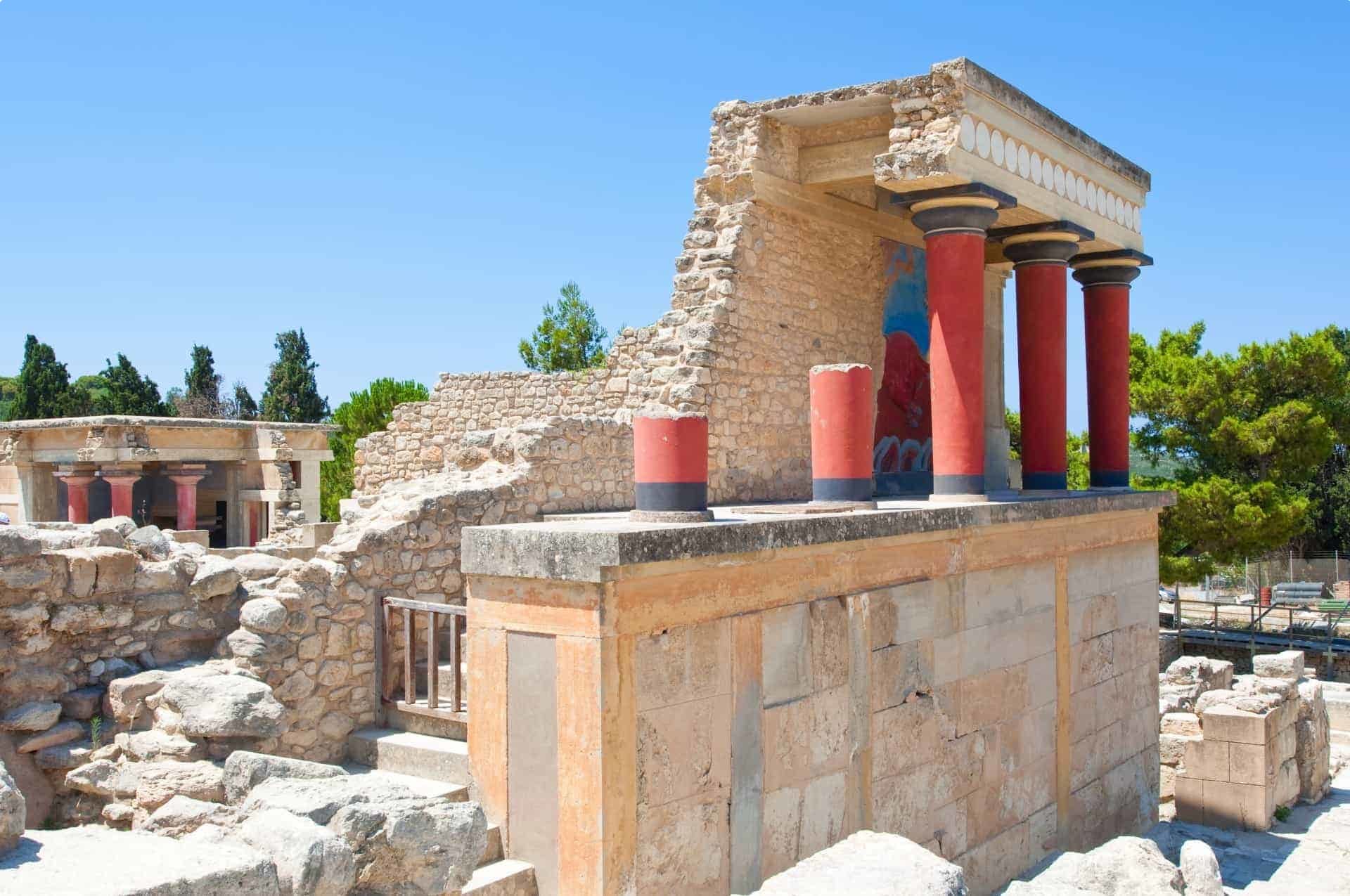
2. The Palace of Knossos
Capital Knossos was inhabited for several thousand years until its destruction in 1375 BC, which marked the end of Minoan civilization. The palace of Knossos was built in circa 1900 BC on the ruins of previous settlements. It was destroyed for the first time, along with the other Protopalatial palaces, around Crete in 1700 BC. This was probably caused by a large earthquake or foreign invaders. It was immediately rebuilt to an even more elaborate complex. Until its abandonment, it was damaged several times during earthquakes, invasions, and in 1450 BC by the colossal volcanic eruption of Thera. A British archaeologist excavated the site in 1900 AD and restored large parts of the palace.
→ Greek mythology
According to Greek mythology, the palace was designed by famed architect Dedalos with such complexity that no one inside could ever find its exit. King Minos, who commissioned the palace, then kept the architect prisoner to ensure that he would not reveal the palace plan to anyone. Dedalos, who was a great inventor, built two sets of wings so he and his son Ikaros could fly off the island, and so they did. On their way out, Dedalos warned his son not to fly too close to the sun because the wax that held the wings together would melt. However Ikaros, young and impulsive as he was, flew higher and higher until the sun rays dismantled his wings and the young boy fell to his death in the Aegean sea. The palace is also associated with the legend of Theseus killing the Minotaur.

3. Nikos Kazantzakis Museum
This museum pays tribute to intellectual, author, thinker, philosopher, politician, and traveler, Nikos Kazantzakis, author of “Zorba the Greek.” The museum is made up of a cluster of buildings in the central square of the historical village of Varvari, now known as Myrtia. The museum was founded by set and costume designer Yiorgos Anemoyiannis, a pioneering figure in Greek theatre. His aim was to preserve the author’s memory and promote his work and thought. The Museum holds:
- manuscripts and notes by the author;
- samples of his correspondence with major thinkers,
- politicians and authors of his time;
- first editions of his works in Greek and other languages;
- rare photographic material;
- souvenirs from his travels;
- personal effects;
- models, costumes and other material from theatre productions of his works in Greece and abroad;
- portraits and sculptures of the author;
- and dozens of foreign-language editions of his works from all over the world.
4. Minoan Palace of Malia.
This is the third-largest Minoan palace in Crete, built in a wonderful setting near the sea, on the road linking eastern and central Crete. This palace, which was first constructed circa 1900 BC, was the mythological seat of Minos’s brother Sarpedon. The palace was destroyed and rebuilt numerous times, and today we can walk around the actual palace, just as it was uncovered by archaeological excavations. Most of the ruins visible today belong to the Neopalatial complex – the second palace – whose rooms are set around 3 courts: the Central Court, the North Court and the Tower Court. The majestic size and complex plan of the palace make it a fascinating place to visit.
5. Zaros
This mountain village is famous for its natural spring water, which is bottled and distributed all across Crete. Various excavations indicate Minoan and Roman settlements, whose members were likely drawn to the fresh water. This area is great for walking. It is relatively close to beaches and archaeological sites. It is also possible to walk the spectacular Rouvas Gorge.
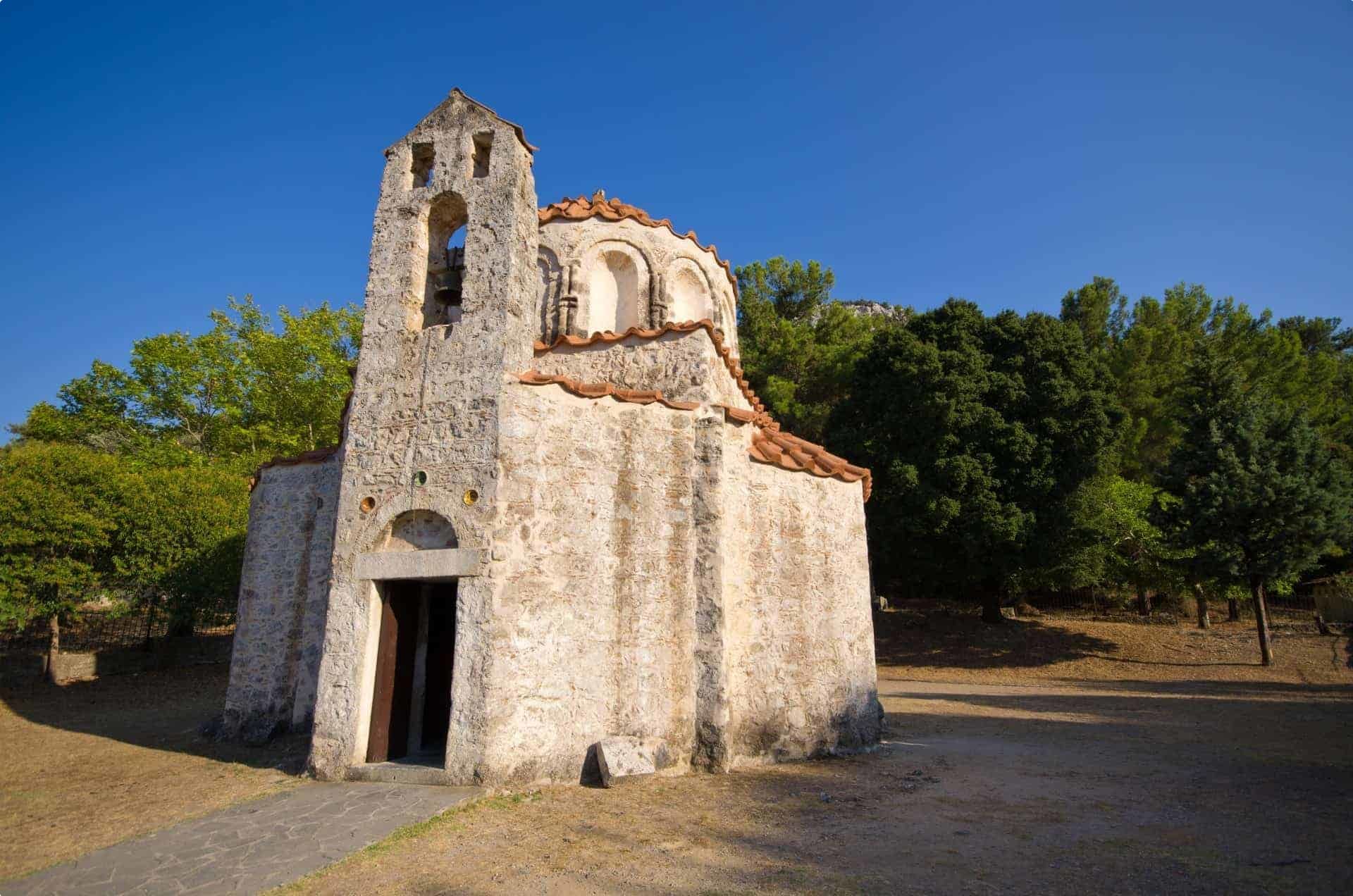
6. Moni Agios Nikolaos
At the mouth of the Rouvas Gorge is Moni Agios Nikolaos, a monastery with some fine 14th century frescoes.
7. Rethymno
Rethymo is the third largest town in Crete, and offers old-world charm to those that visit. Provincial and romantic, it owes much of its atmosphere to its Venetian and Turkish appearance. It is home to one of the best preserved medieval centres in Greece. It features a Venetian fortress and the Old Quarter, including the Rimondi Fountain. Weave through archways and cobbled paths to the Historical & Folk Art Museum. Here you can view displays of traditional clothing, arts, and crafts.

8. Chania
Chania’s most alluring attractions are clustered around its Venetian harbour. Venetian, Turkish and Egyptian influences are visible in this city, which also boasts many restaurants. While here, be sure to see the Church of Agios Nikolaos, which the Ottomans converted into a mosque in 1645, until it was returned to an Orthodox Church in 1918.
9. The Agora
The covered, municipal market in Chania is known as the Agora. Located in West Crete, it is home to many stalls selling local produce and wares. Take a stroll around the Agora for a taste of local culture. It is also a great spot to pick up souvenirs.
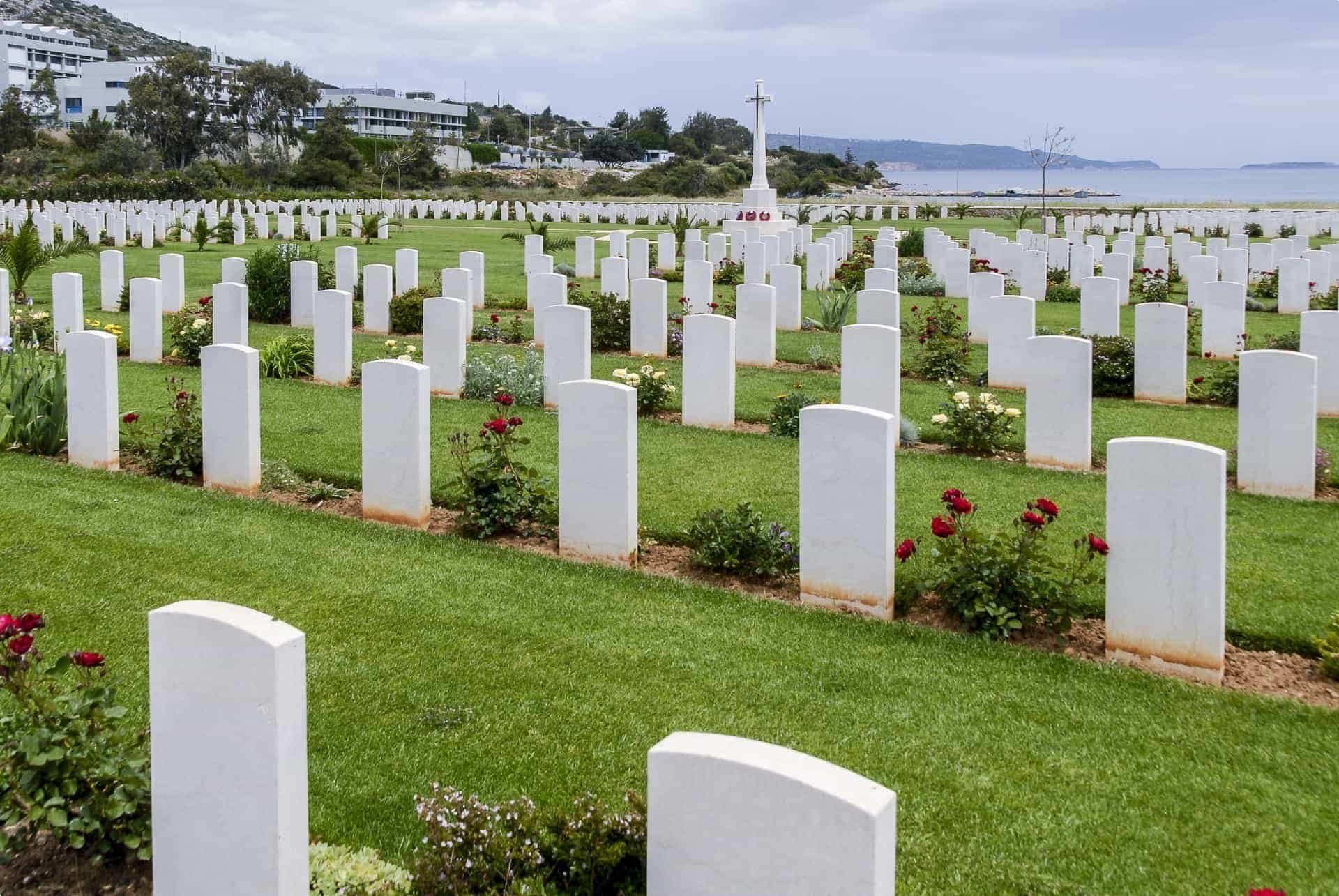
10. Allied War Cemetery at Souda Bay
This military cemetery is located approximately five kms east of Chania. Beautifully preserved and set in immaculate gardens, the cemetery has views across the bay. It is a moving tribute to soldiers fallen in World Wars I and II, with 1500 graves at the site.
Rhodes
Rhodes is the largest of the Dodecanese Islands and has been an important centre of civilization since the 5th century BC. It was part of both the Roman and Byzantine Empires before being conquered by the Knights of St. John, who occupied Rhodes from 1306 to 1522. Ottoman and Italian rule followed, and the island is still rich in culture, history and atmosphere. The island of Rhodes is shaped like a spearhead. The city of Rhodes is located at its northern tip.
5 of the best spots to visit in Rhodes
1. Palace of the Grand Masters of the Knights of Rhodes
The Palace, also known as the Kastello, is a medieval castle in the city of Rhodes. It is one of the few examples of Gothic architecture in Greece. Originally built as a Byzantine citadel in the 7th century, it was converted and modified by the Knights Hospitaller during their occupation of Rhodes. During the Ottoman empire, the Palace was used as a fortress. While its’ magnificent exterior remains well-preserved, an ammunition explosion in the 19th century badly damaged the interior. Repairs were undertaken during the Italian rule in the early 20th century. The site is now a museum, open to visitors who marvel at the fascinating history told by its architecture.
2. The Archaeological Museum of Rhodes
The Museum is housed in the medieval Hospital of the Knights Hospitaller, built in the 14th century. Its collection includes burial finds from ancient cemeteries, distinctive pottery and wares, and a marble head and statuette from the second half of the 1st century BC.
3. Lindos
Lindos is a picturesque village on the island of Rhodes. Its white-washed, narrow streets are lined with shops and restaurants. The acropolis of Lindos rises above the town. A natural citadel, it was fortified by the Greeks, the Romans, the Byzantines, the Knights of St John and the Ottomans in succession. This makes the site difficult to excavate and interpret archaeologically, but is nonetheless a fascinating piece of history. It features the Doric temple of Athena Lindia, a Hellenistic staircase, and the Greek Orthodox Church of St John. The acropolis also offers spectacular views of the surrounding coastline.
4. Kamiros
This ancient city is often described as “magical” by those that visit it. Built across three levels, many of its features are still visible, including the acropolis at the top, plus temples, an agora and a covered reservoir. It offers real insight into life at the time of its construction by the Dorians as early as the eight century.
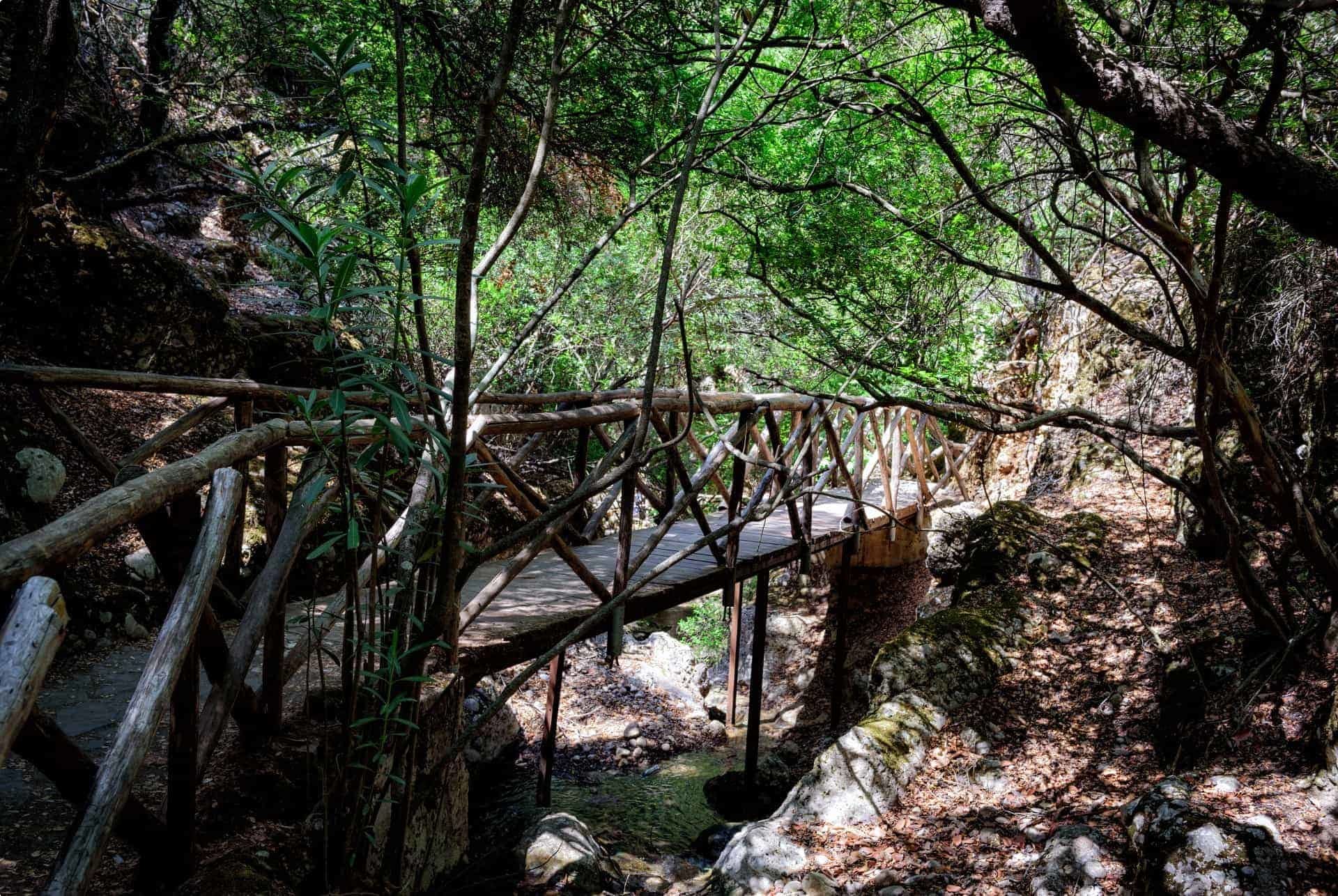
5. Petaloudes (Valley of the Butterflies)
A shaded, green valley with beautiful waterfalls, the Valley of the Butterflies is named for the countless butterflies that camouflage themselves against the tree trunks. This nature reserve is inland on Rhodes. A beautiful spot for a walk, it is also home to the only natural forest of Oriental sweetgum in Europe, and the Jersey tiger moth. A monastery is perched at the top of the walk, making it an idyllic spot for a rest.
Cyprus
A former British colony, Cyprus became independent in 1960 following years of resistance to British rule. Tensions between the Greek Cypriot majority and Turkish Cypriot minority came to a head in December 1963, when violence broke out in the capital of Nicosia. Despite the deployment of UN peacekeepers in 1964, sporadic intercommunal violence continued, forcing most Turkish Cypriots into enclaves throughout the island.
In 1974, a Greek Government-sponsored attempt to overthrow the elected president of Cyprus was met by military intervention from Turkey, which soon controlled more than a third of the island. In 1983, the Turkish Cypriot administered area declared itself the “Turkish Republic of Northern Cyprus” (“TRNC”), but it is recognized only by Turkey. A UN-mediated agreement, the Annan Plan, failed to win approval by both communities in 2004.
In February 2014, after a hiatus of nearly two years, the leaders of the two communities resumed formal discussions under UN auspices aimed at reuniting the divided island. Talks were suspended in October 2014, but resumed in earnest in May 2015 following the election of a new Turkish Cypriot “president”. The entire island entered the EU on 1 May 2004, although the EU acquis – the body of common rights and obligations – applies only to the areas under the internationally recognized government, and is suspended in the area administered by Turkish Cypriots. However, individual Turkish Cypriots able to document their eligibility for Republic of Cyprus citizenship legally enjoy the same rights accorded to other citizens of EU states.
10 of the best in Cyprus
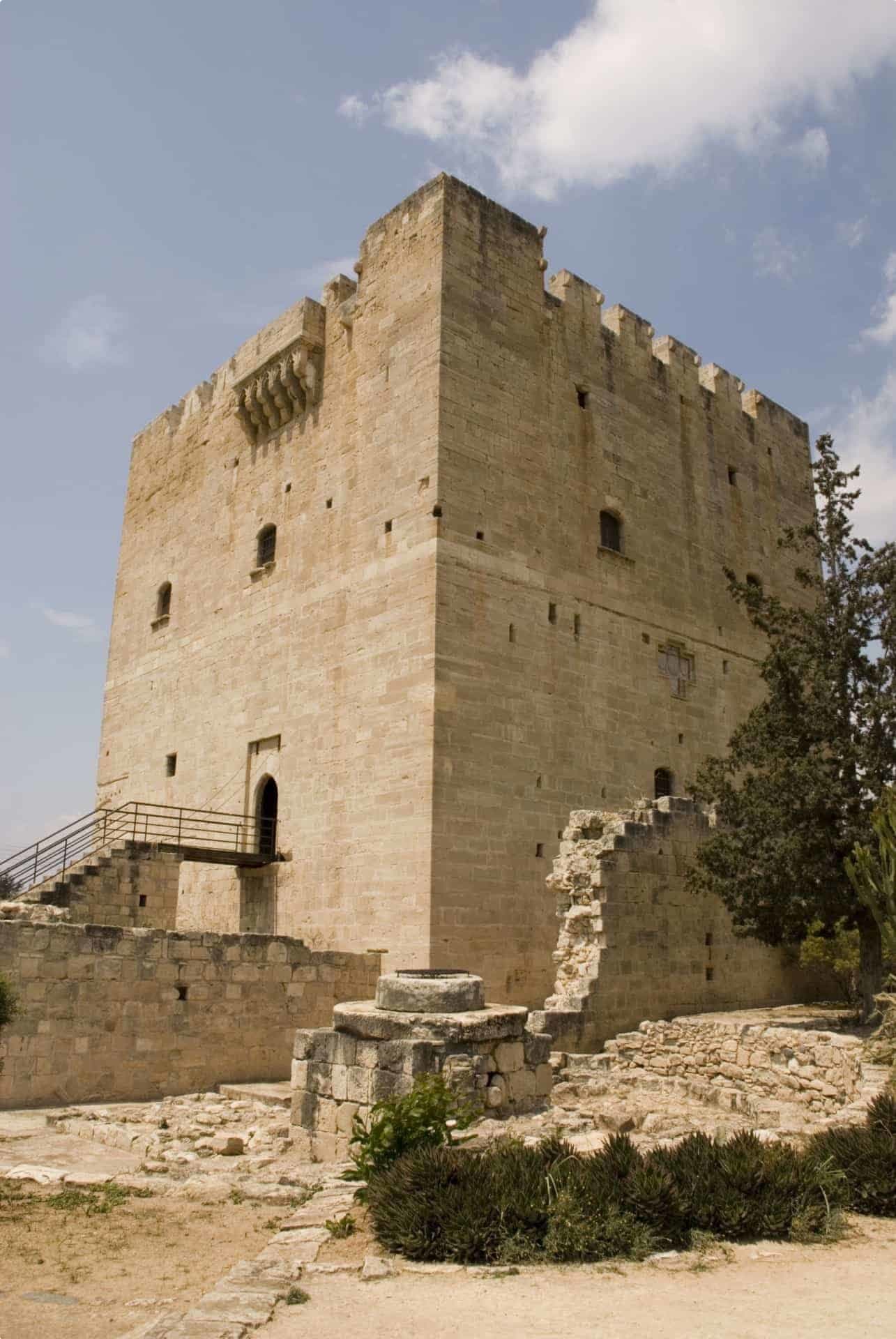
1. Kolossi Medieval Castle
It is thought that the original castle was built in 1210 by Frankish military, when Kolossi was give to the Knights of the Order of St John of Jersusalem (Hospitallers). The present castle was built in 1454 by the Hospitallers under the Commander of Kolossi, Louis de Magnac, whose arms can be seen carved into the castle’s walls. It was of great strategic significance during the Middle Ages, and contained facilities for the production of sugar. This was one of Cyprus’s main exports during the period.
2. Curim, or Kourion
This impressive archaeological site is located on the southwestern coast of Cyprus. The remains include a theatre, stadium, forum baths, aqueducts, and the so-called House of Gladiators. The latter structure dates to the 3rd century and is considered to have been either private-elite or public property. The main wing is arranged around a courtyard, and preserved mosaic panels depicting gladiatorial combats are what lead experts to their interpretation.
The majority of the archaeological remains within the Kourion site date to the Roman and Late Roman/Early Byzantine periods. The acropolis and all archaeological remains within the area are managed and administered by the Cyprus Department of Antiquities and are listed as a UNESCO World Heritage Site.
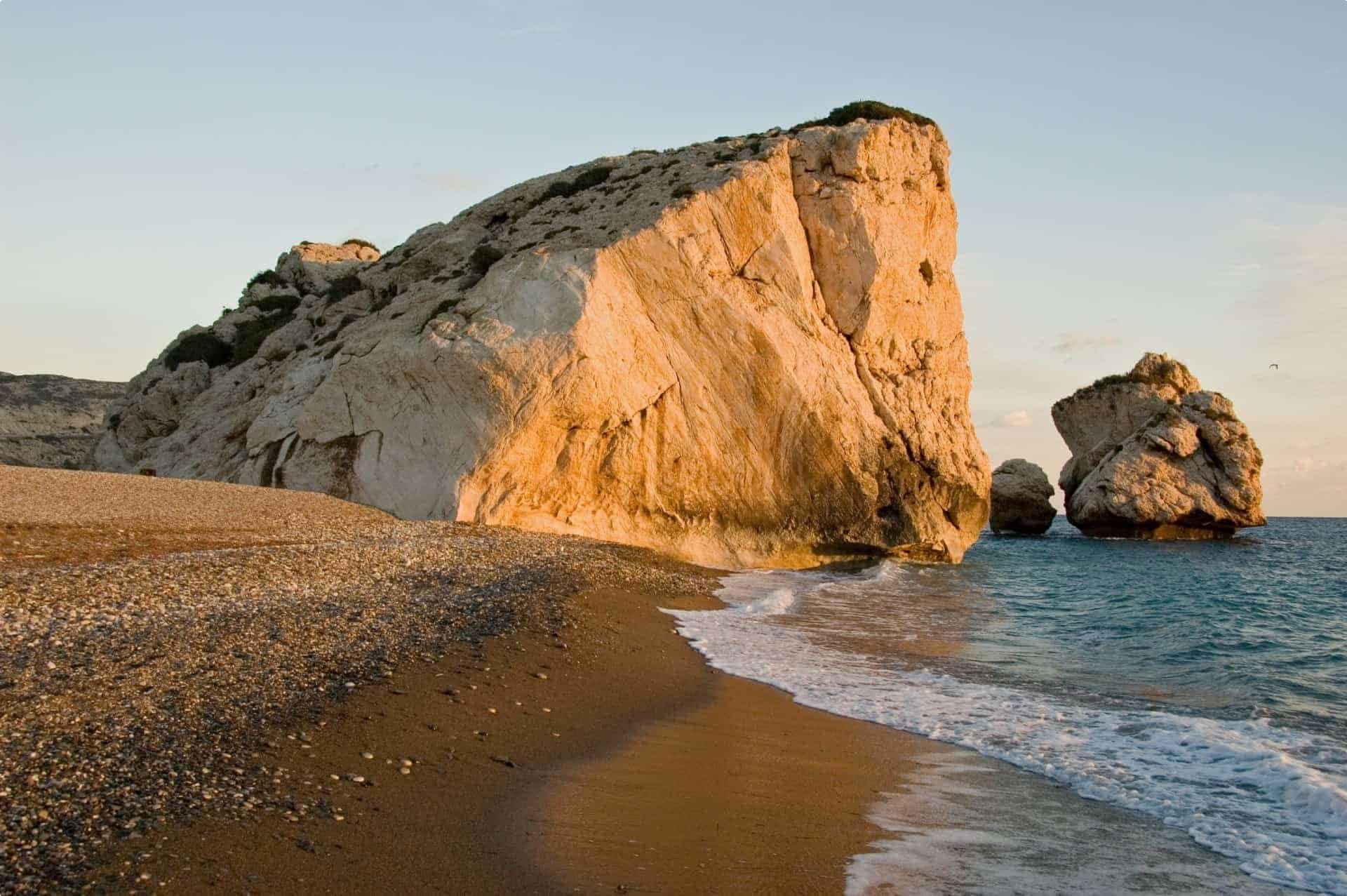
3. Aphrodite’s Rock
This geological formation is the mythical birthplace of Aphrodite. ‘Petra tou Romiou’ can be found along one of the most beautiful coastlines of Cyprus, on the southwest coast of the Pafos district.
→ Greek mythology
According to legend, Gaia ordered her son, Cronus, to mutilate his father, Uranus. The son cut beneath his waist and Uranus’s testacles fell into the ocean. Aphrodite emerged from the waves and sea foam. The goddess of Love and Beauty was escorted to this very beach on a shell. When strong waves break against the rock formation, it is said that a column of water dissolves into a pillar of foam, and for a moment, resembles an ethereal, human shape.
This popular site is also associated with other legends, including that of Byzantine hero Basil in Digenis Akritas. It is said that he heaved the heavy rocks here to resist the invading Saracen. This is how the rock got its name, Petra tou Romiou, the ‘rock of the Greek’.
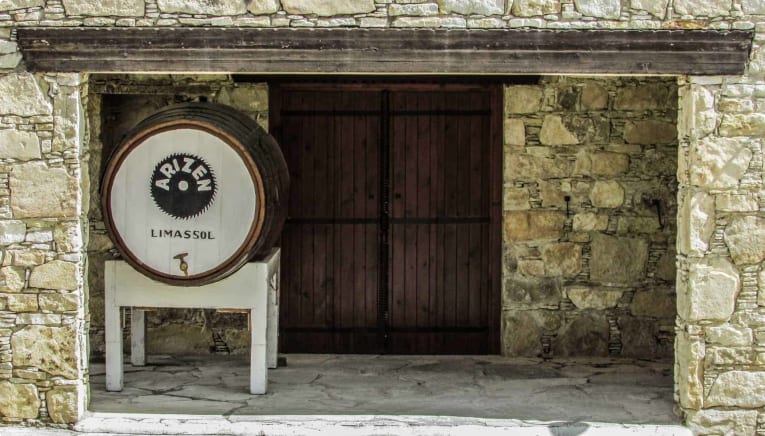
4. Taste the local commandaria
Commandaria is a wine made in the Commandaria region at the base of the Troodos Mountains. Sweet and amber-coloured, it is an ancient style with its earliest mention dating back to poet Hesiod in 800BC. While travelling in Cyprus, be sure to sample the local drop.
5. Byzantine churches
Cyprus is home to a number of UNESCO-listed Byzantine churches, including Archangels Michail, Agios Ioannis Lambadistis Monastery, Panagia tou Moutoulla, and the tiny Panagia tou Araka. Beautiful frescoes and varied architectural elements tell stories about Cyprus’s past. Tours of Cyprus must not miss visiting these impressive sites. For more information, visit the Department of Antiquities website, operated by the Republic of Cyprus.
6. Shipwreck Museum
Located within a castle, this museum houses the relics and cargo of the oldest known trading ship to the region. Evidence suggests the ship was capsized in 300 BC, when she was already significantly old. For more information on this ship and the quaint museum, click here.
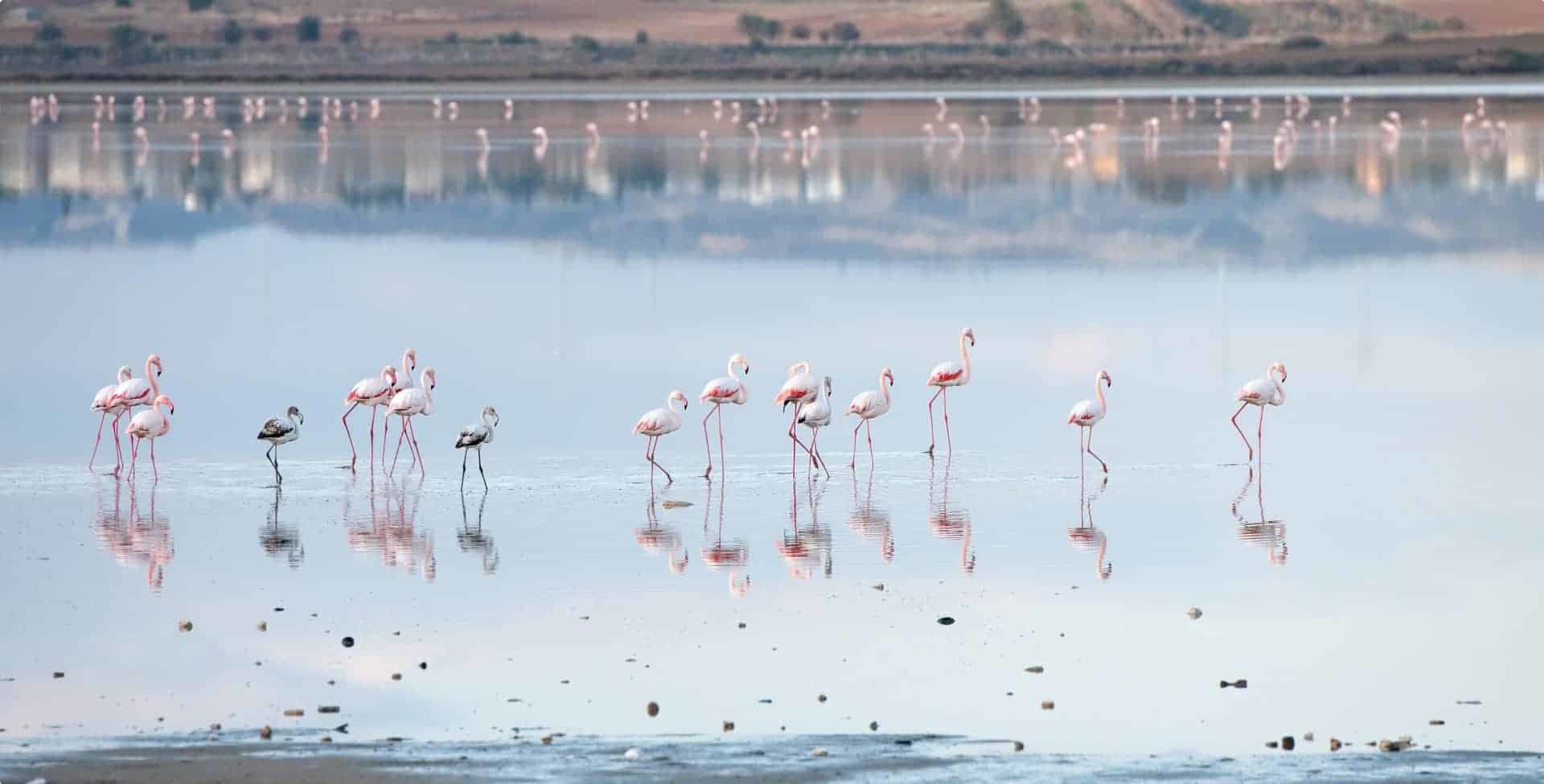
7. Larnaca salt lake
This complex of four different salt lakes is located to the west of the city of Lanarca. It totals 2.2 square kilometres in surface area and is a distinctive landmark of the area. It attracts diverse wildlife, and is a particularly good spot for bird-watching. 85 species of waterbirds frequent the salt lakes; among them the 2000-12,000 flamingos that feed off brine shrimp in the winter months. During the winter months, the lakes fill with water. During summer, this water evaporates, leaving a grey crust or dust on the surface. Salt used to be this one of the region’s major exports. It was collected by donkeys and piled into pyramids at the lake’s edges. Due to rising labour costs, salt is now largely imported, but the region retains great natural and aesthetic value.
8. Necropolis (the Tombs of the Kings)
These underground tombs are located 2km from Paphos harbour. Dating back to the 4th century BC, they have been carved into solid, native rock. They are thought to be the burial sites of Paphitic aristocrats and high officials up to the third century AD. The are named not because Kings were buried there, but due to the magnificence of the tombs. Research and excavations continue at this site, as experts observe these tombs at times imitated the houses of the living. Among offerings to burial were amphorae, or jugs with two handles and a narrow neck. By studying these objects, it is possible to date them, along with other material discovered within the tombs. It is hoped this site will contribute towards developing a more accurate chronology of the Eastern Mediterranean.
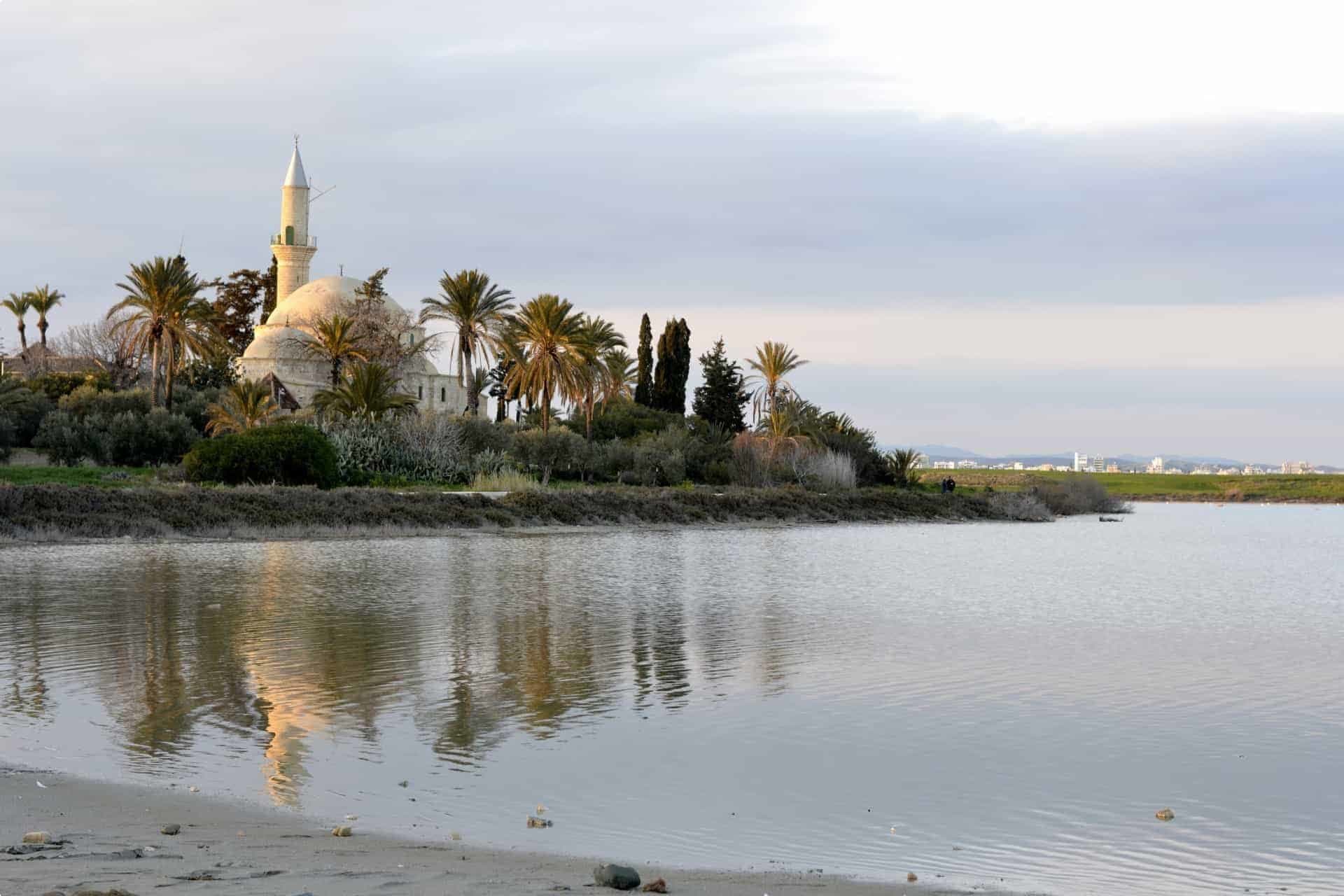
9. Hala Sultan Tekkesi Mosque
This impressive mosque is one of the most important places of worship for Muslims in the world. It is ranked immediately after Mecca, Medina in Saudi Arabia and Al Aksha in Jerusalem. The mosque is located on the banks of the main Salt Lake in Lanarca. In 648AD, with the arrival of the Arab armies, Umm Haram (who is said to have been Mohammed’s aunt) fell from her mule and died. Grand Khalif Moavia, who was taking part in the expedition, immediately ordered the construction of a mosque on this very spot. The mosque has undergone two key renovations, the first in 1816, and the second in 2002, when it was discovered the site has been inhabited since Neolithic times. Some archaeologists believe the tomb dates from the prehistoric period.
10. Cyprus handicraft service
The Cyprus handicraft service is located in Lefkosia. It operates as an outlet for producing and selling local wares, which are made using traditional methods and materials. Visitors to the centre may witness artisans engaged in pottery, lace making, metal work and more. An exhibition displays a collection of these impressive Cypriot handicrafts.
Odyssey Traveller’s tours of the Eastern Mediterranean Islands
Tour Cyprus, Crete, Rhodes and Santorini with Odyssey Traveller’s guided small group tours. Designed especially for senior travellers, these islands are brought to life by our experienced guides. Let the specialists in educational travel arrange your Eastern Mediterranean vacation. If you’re keen to experience our guided tours of Crete, Rhodes, Santorini and Cyprus, please call or send an email. We’d love to hear from you! For all of Odyssey’s Greece and Eastern Mediterranean Islands travel packages click here.
If you would like to learn more about Greece, including its long and fascinating history, click here for our article on travel in Greece.
Related Tours
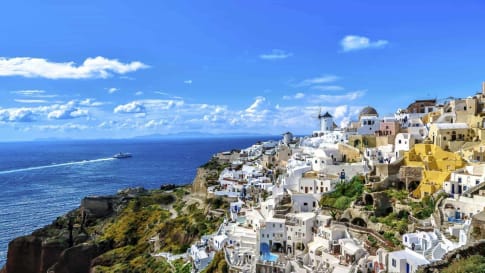
10 days
Apr, Oct, MarSantorini - Crete: Eastern-Mediterranean Islands Short tour
Visiting Greece
Join our small group short tour of the Eastern Mediterranean. Spend 10 days in Greece for a glimpse of the land of great philosophers, myths, and legends. We will learn about the culture and heritage of modern Greece while travelling from Athens to Santorini and over to Crete.
From A$9,375 AUD
View Tour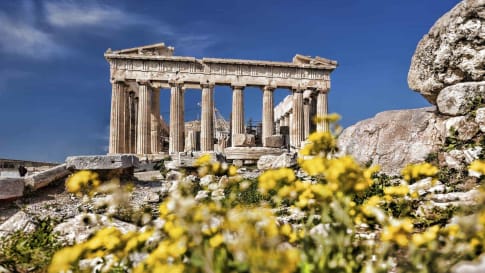
22 days
Apr, Sep, MayGreece small group escorted history tour
Visiting Greece
Our 22 day small group tour explores the land of great philosophers, myths, and legends. We will learn about the culture and heritage of modern Greece whilst exploring and learning Athens, which only found independence in its uprising from the Ottoman Empire in the 19th century.
From A$14,145 AUD
View Tour
20 days
Sep, AprCrete Small Group Tour: The Minoans
Visiting Greece
Crete rich in UNESCO World heritage sites this small group escorted tour provides a travel experience for guests with experienced local guides to remember. For senior couples or single travellers who seek to travel with other like minded people to destinations rich in ancient history then this in one of many small group journeys to be enjoyed.
From A$13,500 AUD
View Tour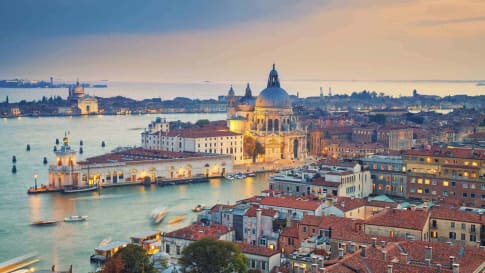
27 days
DecEuropean Cities Small Group History and Cultural Winter Tour
Visiting Albania, Croatia
An escorted tour A Journey that commences in Rome and takes in 12 destinations along its journey to Athens. This is an off season small group journey with like minded people. A small group tour across Southern Europe with local guides sharing authentic in-country authentic experiences for mature couples and solo travellers.
From A$17,295 AUD
View Tour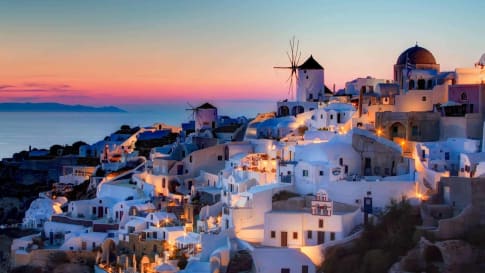
21 days
Apr, OctSantorini, Crete and Cyprus Small Group Tour | Eastern Mediterranean Islands Tour
Visiting Cyprus, Greece
A fascinating small group tour, with an amazing mix of culture and history – the islands of Greece, the cradle of Western civilisation, where traces of a centuries-old history exists. Visit Santorini, a remnant of a volcanic era; Crete, the home of the Minoan civilisation with important archaeological finds at Knossos and Phaistos. Rhodes, inhabited since the Stone Age; and venture further to the island of Cyprus, where east meets west.
From A$17,545 AUD
View Tour